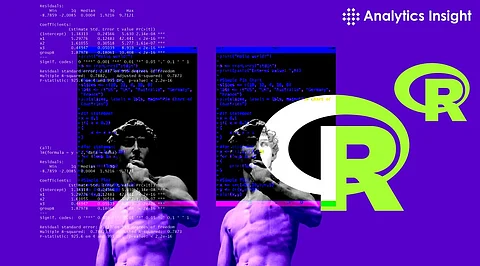

In the realm of data science, R stands out as one of the most versatile and powerful programming languages. With its extensive collection of packages, R empowers data scientists to tackle a wide range of tasks, from data manipulation and visualization to statistical analysis and machine learning. In this comprehensive guide, we'll explore some of the top R packages that every data scientist should be familiar with. These packages provide essential tools and functionalities that streamline data analysis workflows and unlock insights from complex datasets.
Tidyverse is a collection of R packages designed to make data manipulation and visualization more efficient and intuitive. At its core is the dplyr package, which offers a suite of functions for data manipulation tasks such as filtering, sorting, and summarizing. The ggplot2 package, another cornerstone of Tidyverse, provides a powerful grammar of graphics for creating elegant and customizable visualizations. Other packages in Tidyverse, such as tidyr, for reshaping data, and purrr, for functional programming, further enhance the data wrangling capabilities of R. By embracing the principles of tidy data and providing a consistent syntax, Tidyverse simplifies the process of cleaning, transforming, and visualizing datasets.
The caret package (Classification And REgression Training) is a comprehensive toolkit for building and evaluating machine learning models in R. It offers a unified interface for training and tuning a wide range of algorithms, including decision trees, support vector machines, random forests, and gradient boosting machines. With caret, data scientists can easily preprocess data, partition datasets into training and testing sets, and optimize model hyperparameters using techniques like cross-validation and grid search. Additionally, caret provides functions for assessing model performance, including metrics such as accuracy, precision, recall, and ROC curves. Whether you're a beginner exploring machine learning concepts or an experienced practitioner fine-tuning complex models, caret streamlines the entire model development process in R.
For handling large datasets with millions or even billions of rows, the data.table package offers unparalleled speed and efficiency in R. Inspired by the syntax of SQL, data.table provides fast and memory-efficient operations for data manipulation tasks such as subset selection, grouping, and aggregation. Its syntax is concise and expressive, making it ideal for working with large datasets in a concise and readable manner. Data scientists can leverage data.table to perform complex data transformations and calculations with minimal memory overhead, making it a valuable tool for analyzing big data in R. Whether you're dealing with transactional data, sensor readings, or genomic sequences, data.table empowers data scientists to tackle data-intensive tasks with ease.
Ensemble learning techniques, which combine the predictions of multiple individual models, are widely used to improve predictive performance and robustness in machine learning. The caretEnsemble package extends the functionality of caret by providing tools for building and evaluating ensemble models in R. It offers several ensemble methods, including bagging, boosting, and stacking, which can be applied to a variety of classification and regression tasks. With caretEnsemble, data scientists can experiment with different ensemble strategies, combine diverse base learners, and optimize ensemble parameters to achieve superior performance on challenging datasets. By harnessing the collective wisdom of multiple models, caretEnsemble enhances the predictive capabilities of R-based machine learning workflows.
Deep learning has emerged as a powerful approach for solving complex problems in domains such as image recognition, natural language processing, and time series forecasting. The keras package brings the flexibility and scalability of deep learning to R, providing an interface to the popular Keras framework for building and training neural networks. With keras, data scientists can construct sophisticated deep learning architectures, including convolutional neural networks (CNNs), recurrent neural networks (RNNs), and generative adversarial networks (GANs). Keras seamlessly integrates with other R packages such as caret and TensorFlow, enabling end-to-end deep learning workflows in R. Whether you're delving into computer vision, text analytics, or sequential data modeling, keras empowers data scientists to leverage the full potential of deep learning in R.
Join our WhatsApp Channel to get the latest news, exclusives and videos on WhatsApp
_____________
Disclaimer: Analytics Insight does not provide financial advice or guidance. Also note that the cryptocurrencies mentioned/listed on the website could potentially be scams, i.e. designed to induce you to invest financial resources that may be lost forever and not be recoverable once investments are made. You are responsible for conducting your own research (DYOR) before making any investments. Read more here.
